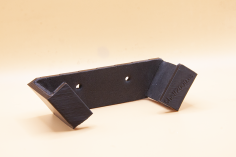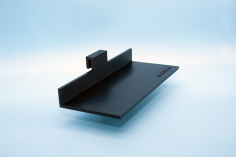- Jose Majadas
- Padel Store Furniture | Racket Holders and Displays
- 0 likes
- 1238 views
- padel shop, merchandising, racket display, retail design

English
1. Understand the customer’s natural path
Most people turn right when entering. Keep the first meter (decompression zone) free so they can adapt to the environment. Then guide them in a circular route, using each step as visual impact and a sales opportunity.
2. Identify hot and cold zones
-
Hot zones: mandatory passage or high visibility. Place premium rackets, new arrivals, and promotions.
-
Cold zones: corners or back areas with less traffic. Revitalize them with good lighting, striking signage, or high-margin products.
💡 Use slat panels, vertical displays, and mirrors to attract attention.
3. Distribute the space into key areas
-
Entrance: illuminated windows and high-rotation products.
-
Rackets: wall or bar displays with technical sheets and clear prices.
-
Textile and accessories: after the rackets, to encourage cross-selling.
-
Checkout: at the end of the route. Add impulse products like overgrips and small accessories.
4. Design a memorable experience
-
Clear flow: wide aisles, no overcrowding.
-
Visual signage: signs and decals to guide.
-
Feedback: observe movements and adjust according to customer behavior.
5. Optimize with smart furniture
-
Racket holders with EVA protection.
-
Modular slat displays, easy to reorganize.
-
Label holders visible without cluttering the space.
✅ Conclusion
An organized store not only looks professional but also sells more. Adapting the layout to the customer’s path and using strategic furniture improves experience, product turnover, and profitability.





